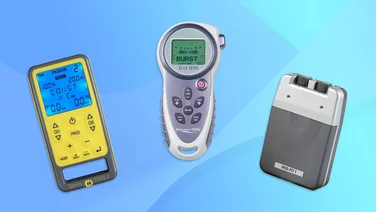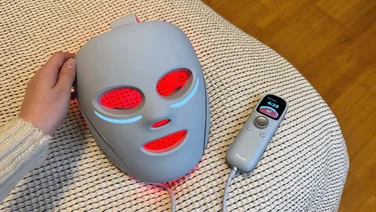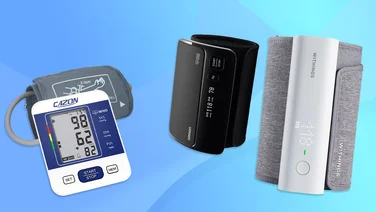To help us provide you with free impartial advice, we may earn a commission if you buy through links on our site. Learn more
- Best heart rate monitor: At a glance
- How to choose the best heart rate monitor for you
- The best heart rate monitors you can buy in 2023
- 1. Wahoo TickR X: Best chest-strap monitor
- 2. Garmin HRM Swim: Best heart rate monitor for swimmers
- 3. MyZone MZ-Switch: Best combination chest belt and wrist monitor
- 4. Garmin HRM-Pro: Best chest belt for triathletes
- 5. Polar Unite: Best fitness watch with heart rate monitoring
- 6. Xiaomi Mi Smart Band 5: Best affordable tracker with HR-monitoring
- 7. Kalenji Dual ANT+/Bluetooth Heart Rate Monitor Belt: Best budget chest strap
- 8. Polar Verity Sense: Best armband heart-rate monitor

If you’re looking for a detailed insight into how fit and healthy you really are, one of the best heart rate monitor’s will help you out. While a step counter or calorie tracker can provide useful short-term metrics, using a heart rate tracker while you exercise can help you work at the right intensity, whether that’s pushing extra hard during a HIIT session, or ensuring you’re not pushing yourself too much during long runs.
Tracing your peak and resting heart rate over time can also give a good idea of how your fitness is progressing. Or indeed regressing, but let’s hope for the former. Heart rate monitors are now built into trackers of all shapes and sizes, but the most popular options are chest straps and wrist wearables. You’ll find the best of those, plus a couple more niche monitors, in this round-up of the top ticker trackers on the market.
Best heart rate monitor: At a glance |
||
|---|---|---|
| Best chest-strap monitor | Wahoo TickR X (~£64) | |
| Best heart-rate monitor for swimmers | Garmin HRM Swim (~£70) | |
| Best budget chest strap | Kalenji Dual Heart Rate Monitor Belt (~£35) | |
| Best armband heart-rate monitor | Polar Verity Sense (~77) | |
How to choose the best heart rate monitor for you
What kind of heart monitor should I get?
The most accurate monitors are chest straps, which sit closer to the heart than wrist-borne trackers and don’t shift around as much during exercise. They’re also generally cheaper than fitness trackers with built-in heart-rate monitors.
That said, an optical wrist heart rate monitor is likely to be more convenient than a strap, not to mention more comfortable – and the best of them are certainly accurate enough for amateur use.
If neither a chest or wrist monitor suits your needs, you might want to consider an arm strap. These are optical monitors worn on the forearm or upper arm, where they can sit more comfortably against the skin than they would on a thin wrist. They’re more comfortable than chest straps, as well as easier to put on, and more accurate than wrist monitors, making them a good in-between pick.
Another option to consider is heart rate-monitoring headphones. These are usually quite accurate because the skin in your ear is thin, which makes readings easier to take. Aside from that, there’s an increasing range of trackers that attach to other body parts, such as the temple or bicep.
How much do I need to spend?
Even the very best chest straps should only set you back around £50 to £70; budget options can come in under £40. Wrist fitness trackers with integrated heart rate tracking, on the other hand, cost anywhere from £20 up to hundreds of pounds. More expensive models usually come with features including built-in GPS and waterproofing as well as heart-rate tracking.
READ NEXT: The best fitness trackers to buy
What features should I look out for?
The first thing to check is the type of connectivity offered by the tracker – Bluetooth, ANT+ or both. This will determine whether you can pair it with phones, third-party apps and gym equipment. The best chest straps will offer both Bluetooth and ANT+, while most wrist trackers and headphones tend to only have Bluetooth.
You can also look for other features, in addition to heart rate monitoring capabilities. Some trackers will coach you through training sessions based on what heart rate zone you’re in, and use the info they collect to estimate your VO2 max and resting heart rate, both of which are great indicators of overall fitness.
Other things to check on are whether the heart rate tracker will work in water (most don’t), how long the battery lasts, and whether the battery is rechargeable or has to be replaced.
READ NEXT: Best pedometers
The best heart rate monitors you can buy in 2023
1. Wahoo TickR X: Best chest-strap monitor

Price when reviewed: £64 | Check price at Wiggle
With both Bluetooth and ANT+ connectivity, the Wahoo Tickr X links with pretty much all trackers and phones easily. It also offers a host of clever extras, including rep counting when following HIIT workouts on the partner app, and run tracking when using a treadmill. If you use the Wahoo RunFit app while training, the Tickr X will even give feedback on your running form, including cadence and ground contact time.
If you don’t care about those extra features, there’s also a basic Tickr model available for just £40. Like most chest straps, the Tickr and Tickr X both have an internal memory, so they can store your training stats and sync to your phone later. Unfortunately, neither is suitable for use while swimming, however.
Key specs – Connectivity: Bluetooth and ANT+; Battery life: 12 months; Battery type: CR2032; Suitable for swimming: No
2. Garmin HRM Swim: Best heart rate monitor for swimmers

Price when reviewed: £70 | Check price at Amazon
Wrist trackers don’t normally work in the water, and many chest straps also struggle to provide a reliable reading or stay in place when submerged. This Garmin tracker, however, has a super sticky strap, so it stays put even when you push away from the end of the pool at the end of each length.
The strap is also designed to withstand constant exposure to pool chemicals without degrading, although it can also be used for open water swims and other types of exercise. The only caveat is that the sticky strap might get a little hot and sweaty when out of the water.
Key specs – Connectivity: ANT+; Battery life: 18 months; Battery type: CR2032; Suitable for swimming: Yes
3. MyZone MZ-Switch: Best combination chest belt and wrist monitor

Price when reviewed: £140 | Check price at Amazon
Although chest belts are the most accurate and responsive way of monitoring your heart rate, there are times when you’d rather not be wearing one and a wrist or arm-mounted monitor makes more sense. That’s exactly what the MZ-Switch offers and has both optical and electrical heart rate monitoring circuitry so you can choose how to use it: clip it to the belt when the utmost in accuracy is required and pop it off and into either the wrist or arm mount when you’d rather go casual.
We’ve found it very accurate in both optical and electrical modes and it even works effectively on your wrist in water. It has a rechargeable battery that’s good for up to six months of use per charge. There’s internal storage for 36-hours of workouts and both ANT+ and Bluetooth connectivity – and the hardware is just the start. You can use the accompanying app to motivate yourself via the MyZone MEP (MyZone Effort Points) system and there are even free online classes to join via the app so you can use it to get fit at home if you can’t face paying for the gym.
It’s expensive for a plain heart rate monitor but this is a great all-rounder, offering accuracy in optical and electrical heart rate monitoring modes and a motivational fitness app to help you get more active.
Read our full MyZone MZ-Switch review for more details
Key specs – Connectivity: Bluetooth, ANT+; Battery life: Up to six months; Battery type: lithium-ion rechargeable; Suitable for swimming: Yes
4. Garmin HRM-Pro: Best chest belt for triathletes

Price when reviewed: £120 | Check price at Garmin
The Garmin HRM Pro is the ultimate chest belt for Garmin watch owners and improves on the Garmin HRM-Run in a number of key ways. The belt is now swim proof, Garmin has added Bluetooth connectivity to its own ANT+ scheme, widening the selection of devices it’s compatible with, and the belt also supports offline workout recording for Garmin watches. This means, simply, that you can go for a swim or a run or whatever else without your watch on and still get data post workout. Great if you’ve forgotten to top up your watch or it runs out mid-activity. Overall, accuracy is excellent, it’s comfy, and battery life (supplied by a CR2032 coin cell) is superb at around a year. If you have a Garmin fitness watch and want the most versatile heart rate monitor, this is the belt to buy.
Key specs – Connectivity: Bluetooth, ANT+; Battery life: 12 months; Battery type: CR2032; Suitable for swimming: Yes
5. Polar Unite: Best fitness watch with heart rate monitoring

Price when reviewed: From £114 | Check price at Amazon
The Unite is the perfect watch for anyone who wants to get fit but isn’t sure how to go about it. Each day it recommends a range of workouts (whether it’s cardio, strength or supportive sessions like stretching you’re keen to do) based on how fit you are to undertake the training on that day.
This is calculated based on the watch’s detailed sleep tracking, which monitors your autonomic nervous system overnight to see how well you’re recovering. As such, your workout recommendations might change if you have an awful night’s sleep, so that you don’t overexert yourself at the wrong time. Key to all of this is the watch’s built-in heart rate monitor, which is used to not only track how hard you’re exercising but is also central to the device’s in-depth sleep tracking.
While the four-day battery life is unimpressive, and there’s no built-in GPS, the Unite is a great entry-level sports watch with genuinely useful features for beginners. If you’re a keen runner or cyclist who likes the sound of the above but also needs GPS, you should check out the Polar Ignite, which costs around £140.
Key specs – Connectivity: Bluetooth; Battery life: 4 days; Battery type: Rechargeable; Suitable for swimming: Yes
6. Xiaomi Mi Smart Band 5: Best affordable tracker with HR-monitoring

Price when reviewed: £50 | Check price at Amazon
The Xiaomi Mi Smart Band 5 is the kind of tracker that falls into the suspiciously cheap category when you consider its price and the features on offer – but we tested it and it produced the goods. There’s really nothing else that offers so much for so little. You can read our full review here.
For £25 (a price that’s often reduced even further) you’re getting a 1.1in colour AMOLED touchscreen and a PPG heart rate sensor; sports, sleep, stress and activity tracking; and up to two weeks of battery life. You can even link the Band to the Xiaomi app and use your phone’s GPS for more accurate tracking of outdoor activities. All in all, it’s fantastic value if you’re looking for a cheap band with heart rate tracking.
Key specs – Connectivity: Bluetooth; Battery life: Up to 14 days; Battery type: Rechargeable; Suitable for swimming: Yes
7. Kalenji Dual ANT+/Bluetooth Heart Rate Monitor Belt: Best budget chest strap

Price when reviewed: £35 | Check price at Decathlon
Given that this chest strap only costs £35, it’s particularly impressive that it connects to devices via both ANT+ and Bluetooth Smart 4.0. There are plenty of far more expensive devices that limit you to one or other of those connectivity options. So, full marks to Decathlon here, as having both Bluetooth and ANT+ guarantees that whatever sports trackers you already own will connect to the Kalenji Dual belt.
The soft strap is comfortable against your skin and dries reasonably quickly after a sweaty workout, and since the belt runs off a CR2032 battery you can expect it to last for several months before it needs changing, even if Decathlon doesn’t give a more precise estimate of the battery life.
Key specs – Connectivity: Bluetooth and ANT+; Battery life: Not given; Battery type: CR2032; Suitable for swimming: No
8. Polar Verity Sense: Best armband heart-rate monitor

Price when reviewed: £80 | Check price at Amazon
A lot of people don’t get on with chest strap heart monitors, finding them uncomfortable and a bit of a faff. Not to mention the fact that putting a cold strap on your chest is a chills-inducing experience you might not relish the thought of before each training session.
If that sounds like you, your next best bet is an armband like the Polar Verity Sense, which is worn on the upper or lower arm and is more accurate than a wrist monitor. In our testing, the Verity Sense closely matched the readings of a chest strap during a variety of workouts, and it certainly outperformed a wrist monitor for accuracy.
The Verity Sense is an upgrade on Polar’s previous armband, the OH1. It offers a longer battery life at 20 hours (vs 12 on the OH1), and is waterproof to 50m as opposed to 30m. It also has more internal memory for storing workouts, and three modes you can switch between, with LEDs on the device showing which one you’re in. The first mode is for when you want to connect it to a watch or phone, the second is to record a workout on the Verity Sense itself, and the third is a swimming mode, during which you can strap it to your goggles.
Key specs – Connectivity: Bluetooth, ANT+; Battery life: 20 hours; Battery type: Rechargeable; Suitable for swimming: Yes











